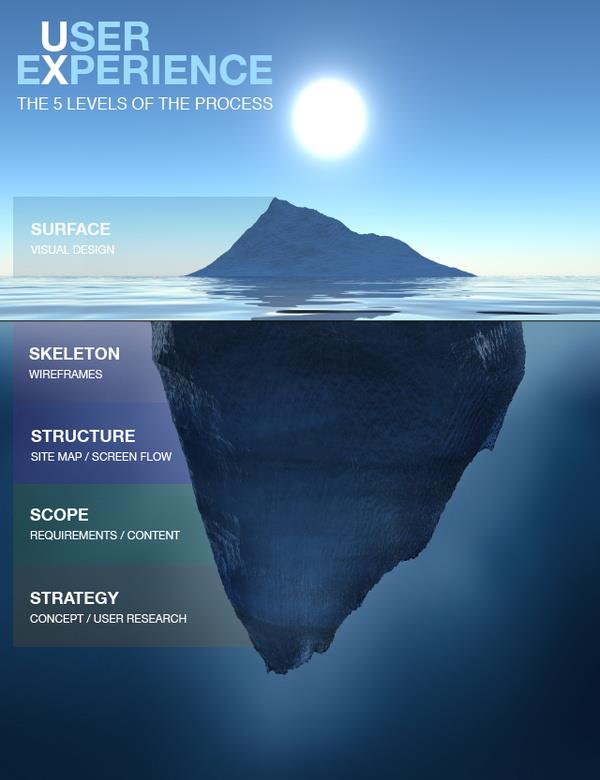
Imagine walking into a company and being given a project with a large budget to do everything in order to deliver the perfect product: proper user research, analysis, competitive landscaping, iterative wireframing, lavish usability testing, and full on harmony between business, developers, and you. Ah, if only every project was like that. Unfortunately there are ample amounts of companies out there that do not share this positive attitude towards investing in User Experience.
When students go to university, I have found that they are taught idealogical methodology within their discipline. However when entering the real-world, graduates become astutely aware of the calibre of real-world obstacles such as budget, time constraints, and office politics. Personally I had a similar experience with Experience design. I am of course speaking very generally, but when designers are first learning how to do proper UX, many are taught UX principles based on the assumption that any given company is willing to invest the time and budget to properly implement our practices. While this is a great way to learn proper UX methodology, it lacks the real-world twist. There is a lot of information out there on UX best practices and methodologies, but the harsh truth is that many organizations are not familiar with the benefits of proper UX which consequently often makes them reluctant to invest in our efforts.
And so I introduce the Piece de Resistance:
Undercover User Experience Design (Voices That Matter)
by Cennydd Bowles and James Box.
My designer friends: I’ve found just the resource for such troubling situations. I recently finished reading Undercover User Experience Design, a practical guide on how to both promote and execute UX design within organizations that are not familiar with all the benefits of UX. It outlines how to mind-ninja* an organization into seeing the benefits of our process. In other words, readers gain insight on how to apply UX practices under the all-too-common constraints of time, budget, and corporate culture.
One specific part from this book that I would like to share today is on topic of UX and persuasion. I believe that doing good UX as well as being able to persuade an organization of its benefits go hand in hand. At times, UX designers will be asked to convince stakeholders of the benefits of UX. The art of persuasion is critical to UX success. Psychologist Robert Cialdini describes 6 “weapons of influence” that drive persuasion and trust:
- Reciprocity
- Commitment and Consistency
- Social Proof
- Authority
- Liking
- Scarcity
Ok great. So how can we apply these principles to UX persuasion? Persuading businesses that investing in User Experience is beneficial to them is a multi-dimensional process: take a look…
Reciprocity
People like to return favors. Doing small favors for various teams within the organization, such as cleaning up a sign-up form, or about-page on a website will quickly show value of UX through quick wins.
Look for ways to make your colleagues lives easier, and they will be more inclined to accommodate your future requests.
Commitment and Consistency
People are more likely to complete a goal that they are committed to. By involving various teams (business, development, various stakeholders) in design reviews, sending out emails summarizing group decisions.
Having continuous conversations with everyone will encourage people to commit to decisions and discourage them from changing their minds later.
Social Proof
People are more prone to do things that others are doing. Some may call it “Group Think”, but it is effectively the same. Do your research and find other organizations that adopt UX in their business through case studies, competitive analysis, etc. This will put them at ease when they ask the inevitable question “What are our competitors doing… we should follow them!”.
Look carefully at any competitor redesigns and highlight the user experience impact to alert stakeholders to the increasing adoption of UX techniques.
Authority
People are likely to obey other people in positions of power. Granted, UX designers might not have this position of power in every organization… which means that it is worth investing in getting senior stakeholders excited about UX. And so, we can leverage the top-down approach and hopefully get the authority-infused people to spur UX adoption.
The concept also applies to “Authority of knowledge” in that if you demonstrate deep knowledge on your subject matter, your opinion will be much more respected.
Liking
People are more apt to obey people they like. People are more likely to take a positive stance towards you and your ideas if they genuinely like you as a person. It sounds silly, but it is worth going for after work drinks or getting to know your collegues on a personal level. It builds trust and also makes for a more amicable environment to work in. In my psychology courses at university, we learnt a theory on how people fall in love: the three elements that contribute to it are proximity, attractiveness, and similarity. I postulate that within a working environment it is good to get people to like you are a person (of course not fall in love) as it makes people more receptive to listening to you. Would you listen to someone you didn’t like?
Scarcity
People are more likely to take action in the face of high demand and scarce supply. (With Black Friday sales on, I can attest to this behavior. Once a year epic sales: I will take appropriate action!)
Look out for opportunities to promote UX as an in-demand competitive advantage in your sector.
So as you can see, the are of persuasion can also be employed when going undercover in an organization to promote User Experience practices. I strongly recommend reading the book by Cennydd Bowles and James Box if you face any obstacles against UX within your organization.
*Mind-Ninja: a tiny tic tac sized verbal comment that is implanted into your opponents mind… that detonates days/weeks later… infusing that mind with your ideas. After detonation, you slowly start to win the UX battle. A more peaceful way of putting it might be “implanting a seed in someone’s mind that grows into your ideas”. But to each their own!
Undercover User Experience Design (Voices That Matter)
Tags: Strategy, UX resource















